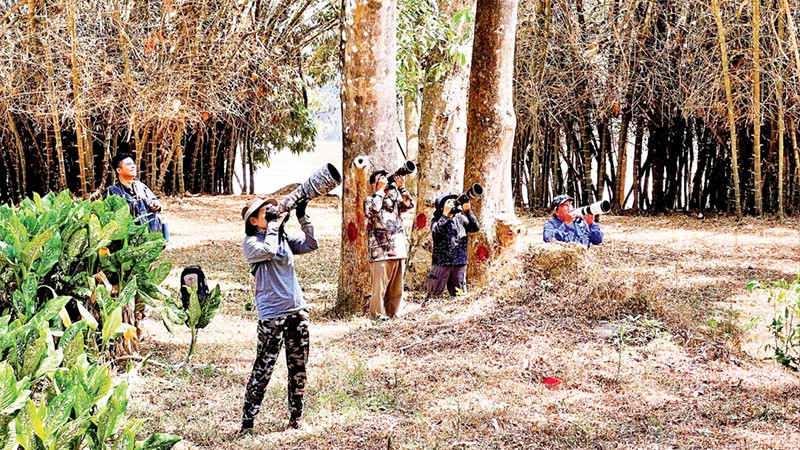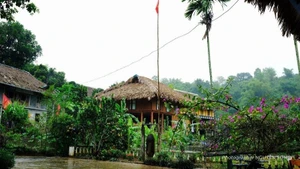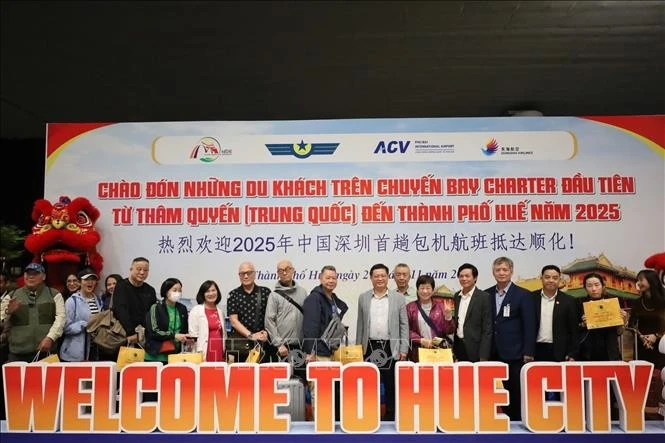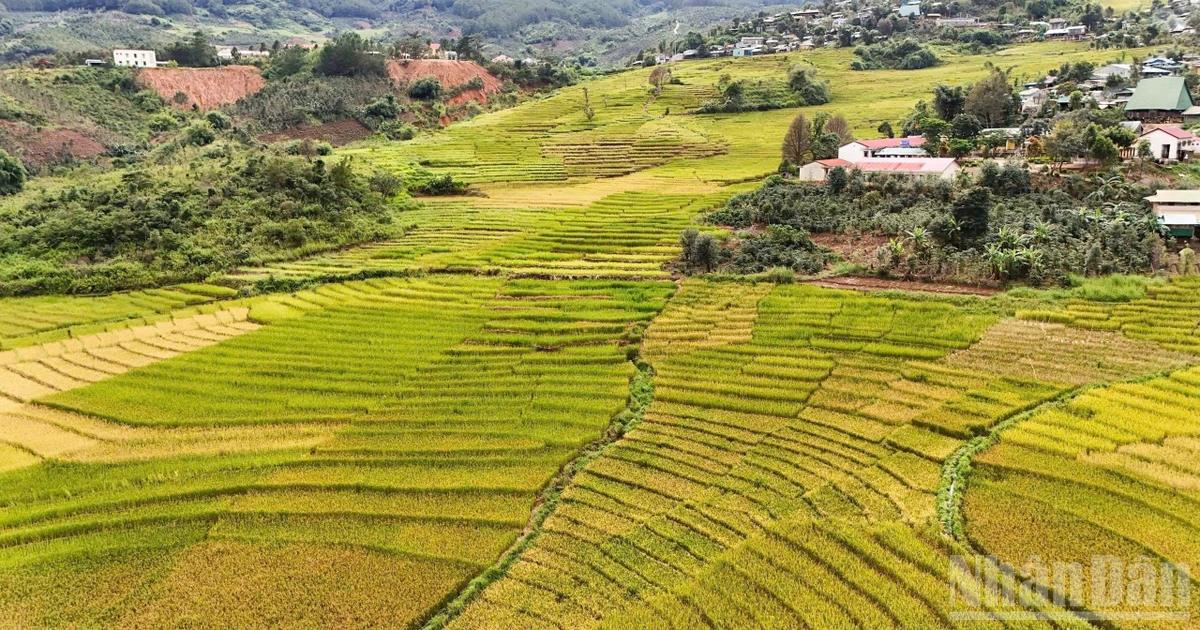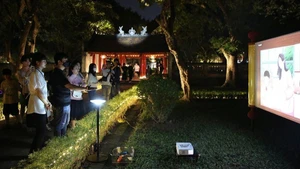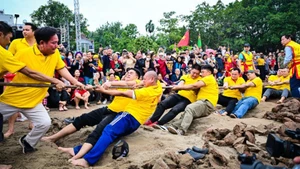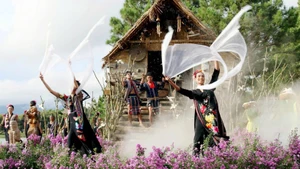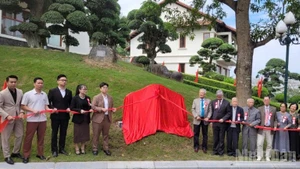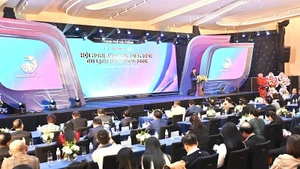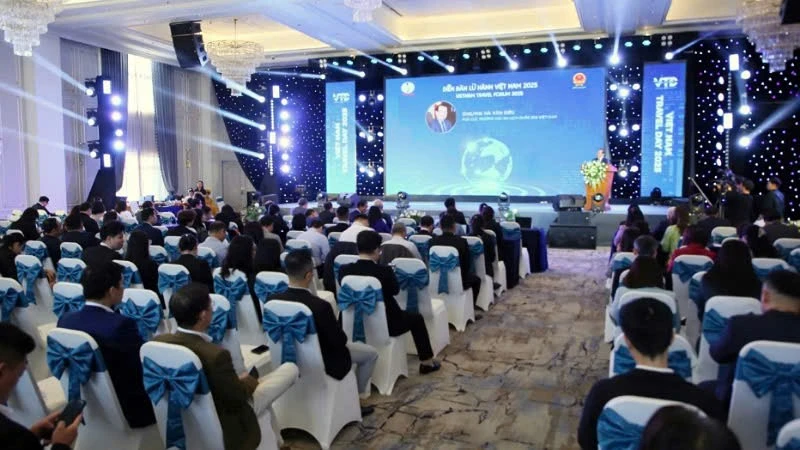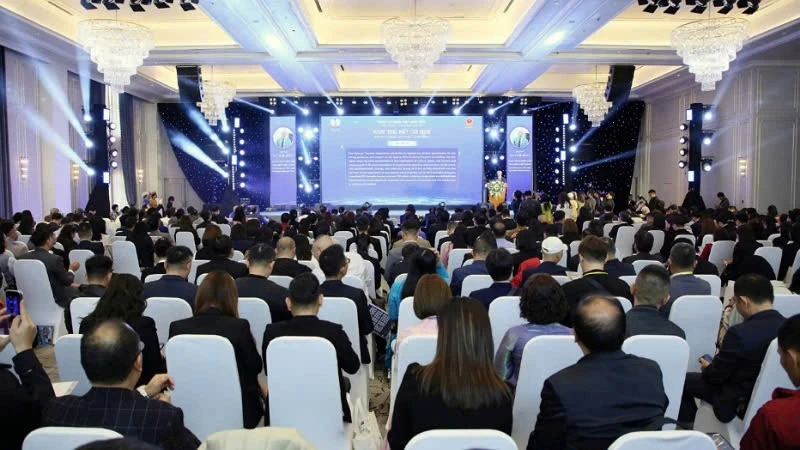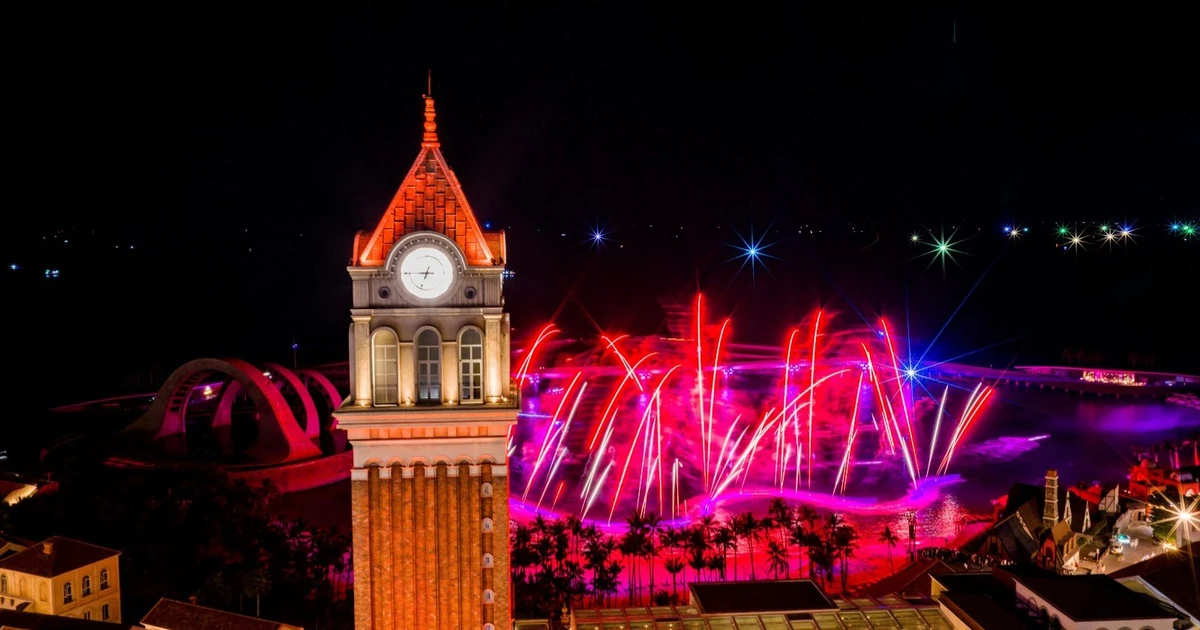When discussing birdwatching in Vietnam, one must mention ornithologist Nguyen Hoai Bao, the founder of Wildtour — an experienced and pioneering organisation in this field. Bao is also a lecturer at the University of Science, Vietnam National University, Ho Chi Minh City, as well as a photographer and environmental activist.
According to Bao, the ideal time for birdwatching in Vietnam is during the dry season, from November to early May. The last two months of the year offer favourable weather and welcome numerous migratory birds from the north to coastal wetlands such as Xuan Thuy National Park (Nam Dinh Province), Can Gio (Ho Chi Minh City), and Ben Tre Province in the south.
From January to April, tours in tropical forests such as Cat Tien National Park (Dong Nai Province), Bidoup-Nui Ba (Lam Dong Province), Phong Nha-Ke Bang (Quang Binh Province), Cuc Phuong (Ninh Binh Province), and Tam Dao (Vinh Phuc Province) are ideal as many bird species showcase their melodic songs and vibrant plumage.
In inland wetland areas such as Tram Chim National Park (Dong Thap Province), not only tourists but also photographers, journalists, and scientists often visit to admire the resident and migratory bird species. Photographer Ngo Tran Hai An, a prominent young social media influencer from Ho Chi Minh City, revealed that he has visited Tram Chim more than ten times due to his love for its ecosystem, dubbed the “kingdom of birds and water flowers”.
During the annual flooding season (August to November), Tram Chim sees an abundance of food, attracting nesting birds and offering unique opportunities for visitors to experience its vibrant wildlife. Recently, journalist Do Doan Hoang from Hanoi described his birdwatching trip to Tram Chim as transformative, stating: “Nature enveloped me... just a few steps to the dock, and I captured flocks of thousands of birds taking flight simultaneously. Witnessing the bustling bird activity was the most fascinating thing I’ve ever seen.”
The activity of observing birds in their natural habitats has become a hobby and habit for nature lovers worldwide. Studies suggest that birdwatching emerged and gained popularity in the UK in the 20th century before spreading to Europe, the Americas, and Australia.
Today, this activity involves traveling to pristine regions to observe, experience, and photograph rare birds and other wildlife. In Vietnam, sporadic international tourists and experts began birdwatching in the 1990s. However, it remained informal until Wildtour was founded by Nguyen Hoai Bao and his colleagues in 2005.
Driven by scientific research and a commitment to conserving the bird world, they spent over three years surveying forests and coastal areas to design tours and secure permits. At the time, birdwatching was still a little-known activity in Vietnam.
Initially catering mainly to international clients, particularly from Europe and North America, Vietnam’s birdwatching tours expanded post-2015 to include visitors from Thailand and Singapore. Today, the client base has grown to include nature photography enthusiasts from Japan, the Republic of Korea, China, and India.
Nguyen Hoai Bao emphasises that birdwatching tours offer multiple benefits: diversifying tourism products, creating jobs, generating funds for conservation efforts, and fostering environmental awareness among both tourists and locals.
In addition to organising tours, Wildtour has collaborated with international partners to promote nature appreciation, particularly among young people. Initiatives include birdwatching festivals (Birdraces) in national parks, events to welcome and bid farewell to migratory birds, and photography contests focused on birds and wildlife.
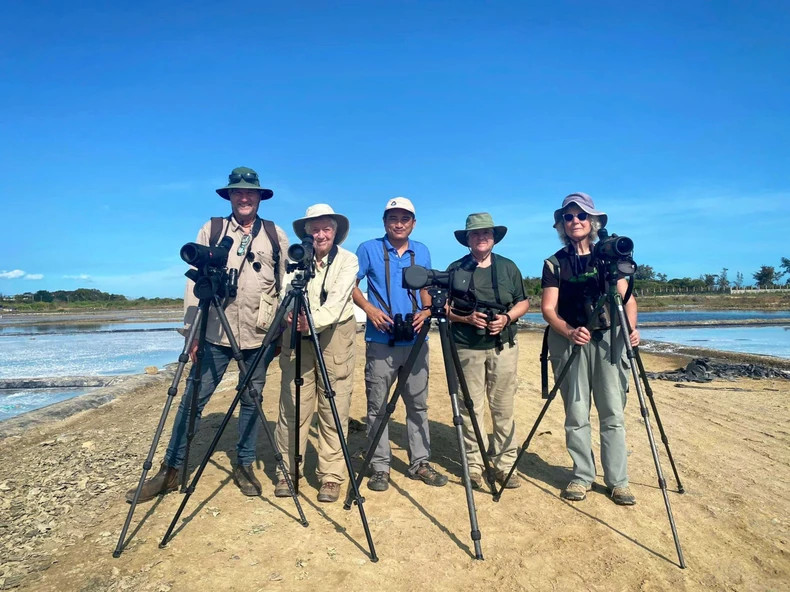 |
| Expert Nguyen Hoai Bao (in the middle) during a bird-watching tour with tourists. (Photo: Wildtour) |
Although multi-day birdwatching tours fall into the high-end segment, averaging 3,000–6,000 USD per person (75–150 million VND), Wildtour reports that their tours are fully booked until the end of 2026. Shorter tours, priced between 2–3 million VND, are also available, though they remain more expensive than mainstream tourism options.
However, with its unique and emotional experiences, birdwatching in Vietnam is seen as having untapped potential to attract high-spending clients and influential individuals. Wealthy visitors and world-renowned experts have repeatedly visited Vietnam, spending substantial amounts to track and photograph rare and stunning birds such as the Sarus crane, white-cheeked laughingthrush, mountain swiftlet, red-headed woodpecker, pied crow, and white-naped crane.
Some bird species are found only in specific locations, such as Da Lat (Lam Dong) or the summit of Fansipan (between Lao Cai and Lai Chau). Visits to these areas not only offer birdwatching opportunities but also allow tourists to immerse themselves in majestic landscapes and unique local cultures.
Globally, successful conservation models combining bird preservation and ecotourism can be found in countries such as Papua New Guinea, where indigenous tribes shifted from hunting birds-of-paradise to protecting them for wildlife photography tourism. In Cambodia, conservation programmes for giant ibis and white-shouldered ibis in Tmatbouy Village have preserved bird populations while providing income for locals through community and ecotourism initiatives.
In Vietnam, Cat Tien National Park has attracted over 1,000 international visitors to photograph the barred buttonquail, while Cham Chim National Park has similarly drawn many tourists to witness its diverse bird species in their natural wetland habitat, benefiting both tour operators and the national park.
Bao notes that sustainable tourism relies on demonstrating the economic value of conservation and inspiring communities and tourists to protect birds and other wildlife. However, challenges remain, including limited infrastructure at birdwatching sites and a lack of qualified guides with expertise in both tourism and ecology. Additionally, indiscriminate hunting and habitat destruction require multi-stakeholder cooperation to address.
Currently, around ten domestic companies offer birdwatching and bird photography tours across Vietnam. Director of Vietnature Tour Nguyen Luong Dung, a forestry expert and a former employee at Cat Tien National Park’s tourism centre, remarked: “Nature-based tourism in Vietnam is showing signs of growth, accompanied by positive shifts in sustainable tourism practices and biodiversity conservation.”
